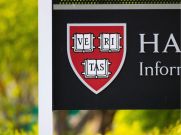The University of Utah (U of U) Department of Physics & Astronomy is the latest to attempt to enshrine the unholy trinity of Diversity, Equity, and Inclusion—commonly abbreviated as DEI, though U of U has rearranged the terms to create the less common acronym, “EDI”—in its Departmental Retention, Promotion, and Tenure policy, according to a faculty member who shall remain anonymous. U of U Physics & Astronomy has prioritized so-called “Equity and Inclusion” for some time, and is far from the first academic department to do so. But this proposed policy change represents a new trend within academia, in which faculty are not only pressured by unspoken rules to adhere to the religion of DEI—they are compelled to by official university policy.
The proposed additions to the Departmental Retention, Promotion, and Tenure policy were created by the U of U Physics & Astronomy EDI Committee and Executive Committee, the latter of which includes Physics Chair Christoph Boehme, Associate Chair Ben Bromley, and Associate Dean of the College of Science Pearl Sandick. In other words, DEI dogma is coming from the top down. The policy’s proposed language reads as follows:
3.5 Evaluation of Commitment to Equity, Diversity, and Inclusion (EDI)
Candidates are required to submit a statement of accomplishments for and commitment to enhancing equity, diversity, and inclusion. This statement should summarize how they advance the Department’s mission to “diversify the next generation of researchers, educators, and technology workforce leaders” and “to strive for greater equity and inclusion of diverse voices and perspectives.” Examples might include:
- Inclusive mentorship philosophy and practices. There are many resources to help faculty members learn how to utilize evidence-based inclusive mentorship practices, including this national academies report and references therein: https://www.nap.edu/read/25568/
- Inclusive teaching philosophy and practices. There are many resources to help faculty members learn how to utilize evidence-based inclusive instructional practices, including this national academies report and references therein: https://www.nap.edu/read/18687/
- Outreach to historically marginalized populations in higher education and STEM.
- Contributions to University committees and efforts related to EDI.
- Participation in organized professional development activities related to EDI.
All candidates should make EDI part of their work as faculty members, but candidates are not expected to engage in all the areas listed above, which is not meant to be exhaustive or prescriptive.
Notice that the Department does not provide definitions of “equity,” “diversity,” or “inclusion.” Does it mean to convey equity in its traditional sense, namely the “freedom from bias or favoritism,” or rather the contemporary progressive definition of disadvantaging some in order to advantage others? What about diversity? Does the Department value diversity of ideology and worldview, or only diversity of academically irrelevant census categories? Does the “inclusion of diverse voices and perspectives” cover those with whom we disagree, or merely those who affirm what we believe but happen to have a different skin tone, sex, or disability status? Given the language contained on the U of U Physics & Astronomy Equity & Inclusion webpage, as well as the current trajectory of virtually all of American higher education, we are left to assume that the Department means the latter for each of these three terms.
Notice also the prescriptive call to action embedded within this language: “All candidates should make EDI part of their work as faculty members …” By no means should faculty make DEI observance “part of their work.” Physics and astronomy professors ought to be concerned with two things and two things only: (1) the disinterested pursuit of physics and astronomy knowledge and (2) the transmission of said knowledge and the associated research methods to the next generation of physicists and astronomers. To preoccupy oneself with DEI mandates will hinder both of these concerns by polluting dispassionate research with an impassioned ideology. Research and teaching will succumb to ulterior ideological motives. In short, DEI has no place in the work of a professor, regardless of what one believes about the claims contained therein.
What’s more, this proposed language presupposes that all faculty members adhere to the DEI religion in the first place. How the Department will handle those that may speak out against it is currently unclear, though given that this is part of the “Retention, Promotion, and Tenure policy,” it would appear that U of U Physics & Astronomy is not interested in retaining, promoting, or tenuring the unfaithful. This poses an immediate threat to academic freedom within the department and, given the precedent it will set, within U of U at large.
Unfortunately, U of U Physics & Astronomy is far from alone in its proposed practices, though it may be the first time such changes are initiated within a science department. In July, a professor at the University of Texas at Austin sent the National Association of Scholars a proposed “Faculty Diversity, Equity, and Inclusion Strategic Plan,” which contained similar language to the U of U’s above-described policy additions and would require allegiance to DEI dogma from hiring all the way through the tenure process. Similarly, we learned early last year that at least some faculty at the University of California, Los Angeles are required to submit a “diversity statement” in order to receive a merit raise in salary.
DEI ideology is now ubiquitous within American academia. It is no longer something faculty must affirm simply to maintain amicable relationships with colleagues. They must now publicly profess their faith in DEI to get hired, promoted, and tenured. NAS condemns such ideological litmus tests and urges the U of U and all other schools proposing similar measures to return to their true purpose: the dispassionate pursuit of truth, not the impassioned defense of a religious dogma.
David Acevedo is Communications & Research Associate at the National Association of Scholars.
Image: Andy Holmes, Public Domain













